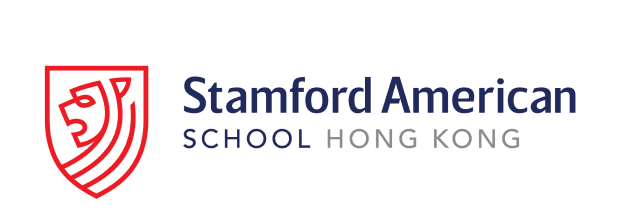As the age-old proverb says, “It takes a village to raise a child.” This timeless wisdom underscores the crucial role of collaboration between parents and schools in nurturing students’ academic and personal growth. A thriving parent and school community partnership is key to creating an environment where every child can thrive. By working together, we can create a supportive learning environment that benefits everyone involved. Let’s explore the mutual benefits, effective strategies, and success stories of collaboration between parents and the school community.
The Power of Partnership: Mutual Benefits
A strong school-community partnership goes beyond improving student outcomes; it strengthens the fabric of families, schools, and the broader community.
Benefits for Students
When parents and schools collaborate, students benefit significantly:
- Academic Achievement: Students are more likely to perform well when parents and educators share academic goals. Studies show that active parental involvement enhances motivation and school performance.
- Social-Emotional Well-Being: A supportive school community helps students build confidence and resilience. They feel valued, both at home and in school.
- A Sense of Belonging: Collaborative environments foster inclusivity, ensuring students feel connected to their school and peers.
Benefits for Parents
A thriving school-community partnership also empowers parents:
- Curriculum Insights: Parents gain a deeper understanding of their child’s curriculum, enabling them to support their learning at home better.
- Improved Communication: Open dialogue with educators reduces misunderstandings and ensures parents are informed about their child’s progress.
- School System Navigation: Parents feel more confident managing the complexities of the education system, including school policies, resources, and extracurricular activities.
Benefits for Schools
For schools, a strong partnership translates into a better learning environment:
- Enhanced Resources: Parents contribute their time, expertise, and sometimes even financial support, enriching school programs.
- Improved Student Behavior: With parents and schools aligned, students tend to exhibit better behavior and engagement in class.
- Community Support: Schools gain advocates in the community, fostering a sense of unity and shared purpose.
Building a Collaborative Environment
Creating a thriving parent and school-community collaboration requires intentional effort. Here are some strategies schools and families can adopt:
Open Communication
Effective communication forms the backbone of any strong partnership. Schools can foster transparency by:
- Sending regular newsletters to keep parents updated on events and announcements.
- Organizing parent-teacher conferences to discuss student progress.
- Utilizing accessible online platforms for sharing information and enabling two-way communication.
Joint Events and Activities
Shared experiences strengthen the bond between families and schools. Consider initiatives such as:
- Hosting family nights that encourage parents and children to learn and play together.
- Organizing volunteering opportunities where parents can contribute to school projects or events.
- Planning school-wide events that celebrate the community’s diversity and accomplishments.
Shared Decision-Making
Involving parents in the decision-making process fosters a sense of ownership and partnership. Schools can:
- Establish parent councils to gather input on key initiatives.
- Create committees focused on student support, addressing academic and emotional needs.
- Engage in collaborative goal-setting to align priorities and expectations.
Mutual Respect and Understanding
- Building trust is essential for a lasting partnership. Schools and parents should:
- Maintain open communication about goals and challenges.
- Celebrate the diverse cultural backgrounds within the community, fostering inclusivity.
Overcoming Challenges
While the benefits of a parent and school-community partnership are undeniable, challenges often arise.
Common Obstacles
- Busy Schedules: Parents and educators often juggle multiple responsibilities, leaving limited time for collaboration.
- Communication Barriers: Differences in language, culture, or access to technology can hinder effective communication.
Solutions and Tips
- Flexible Communication Options: Offer meetings at various times or provide virtual options to accommodate busy schedules.
- Translated Materials: Provide resources in multiple languages to ensure inclusivity.
- Streamlined Platforms: Use centralized tools to share updates, making it easier for parents to stay informed.
By proactively addressing these challenges, schools can foster stronger connections with parents, ensuring no one is left behind.
Success Stories and Inspiration
The positive impact of parent and school-community collaboration is best illustrated through real-life examples:
A Local Success Story
Stamford American School Hong Kong’s Global Mentor Program showcases the impact of a strong school-community partnership. Through open events and collaborative initiatives, the school connects with students, families, and the broader community.
One example was when we welcomed James Scott, coach of the Shanghai Sharks basketball team, as a Global Mentor. During this event, families participated in free basketball clinics and explored Stamford’s 19 co-curricular offerings, such as coding, arts, and innovation workshops. Scott’s inspiring journey of perseverance and discipline encouraged students to embrace challenges and work hard to achieve their goals.
The Global Mentor Program extends beyond sports. Previous mentors have included authors, entrepreneurs, and Olympians who connect classroom learning with real-world inspiration.
Impact on Students and Families
This initiative reinforced the benefits of a collaborative school community. Students gain valuable life skills, including teamwork, resilience, and discipline, while parents deepen their engagement with the school and its holistic approach to learning.
Our commitment to building strong community relationships continues through regular parent workshops and free swim sessions, creating a thriving environment for all.
Conclusion: Taking Action
Creating a thriving school community partnership starts with small, intentional steps. Parents and educators can work together to build a supportive environment where students flourish.
Here are some ways to get involved:
- Volunteer Your Time: Participate in school events, workshops, or committees.
- Stay Informed: Regularly check school updates and communicate with teachers.
- Celebrate Diversity: Share your culture and traditions to enrich the school community.
By fostering collaboration, we can ensure every child feels supported at home and in school. At Stamford American School Hong Kong, we believe in the power of partnership to create a nurturing environment where students can thrive and achieve their fullest potential.






